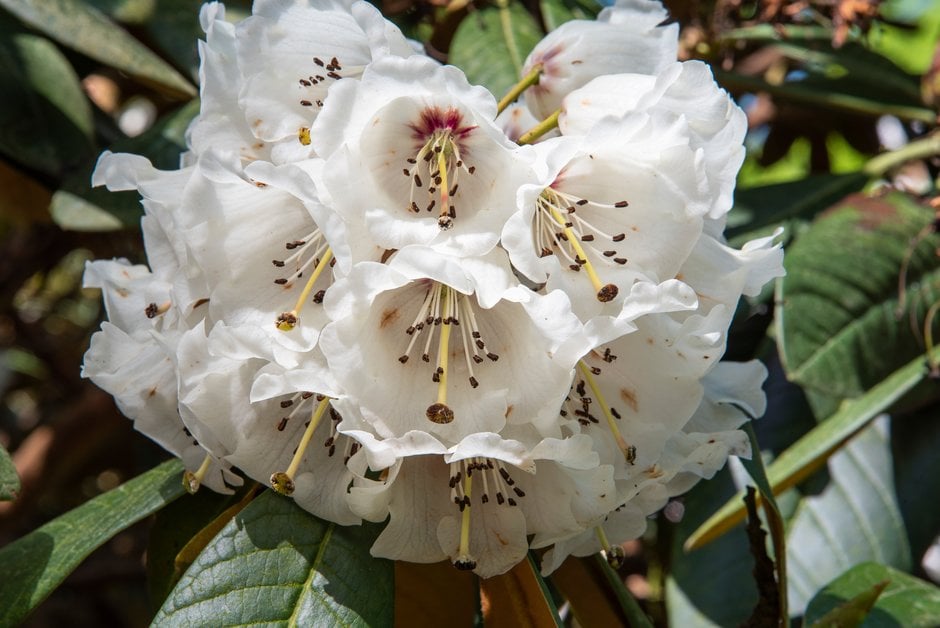Rhododendron arizelum
notable rhododendron
A large, evergreen shrub or small tree to 8m tall. Dark green leaves up to 22cm long are covered with a cinnamon-brown felt on the undersides. Fifteen to twenty-five bell-shaped flowers are borne in trusses to 15cm in diameter in spring; flowers are creamy-yellow, white or rose-pink with dark crimson blotches at the base

Buy this plant
Size
Ultimate height
4–8 metresTime to ultimate height
10–20 yearsUltimate spread
4–8 metresGrowing conditions
Moisture
Moist but well–drainedpH
AcidColour & scent
| Stem | Flower | Foliage | Fruit | |
| Spring | Cream Yellow White Pink Red | Green Brown | ||
|---|---|---|---|---|
| Summer | Green Brown | |||
| Autumn | Green Brown | |||
| Winter | Green Brown |
Position
- Partial shade
Aspect
East–facing or North–facing or West–facing
Exposure
Sheltered Hardiness
H5Botanical details
- Family
- Ericaceae
- Native to GB / Ireland
- No
- Foliage
- Evergreen
- Habit
- Bushy
- Potentially harmful
- Harmful if eaten. Wear gloves and other protective equipment when handling. Pets (dogs, cats, rabbits, tortoises) Harmful if eaten - for further information and contact numbers regarding pets, see the HTA guide to potentially harmful plants
- Genus
Rhododendron can be evergreen or deciduous shrubs or trees, with simple leaves, sometimes with a dense colourful indumentum of hairs on the lower side, and funnel-shaped, bell-shaped or tubular flowers that may be solitary or in short racemes
- Name status
Correct
- Plant range
- China NE Myanmar
How to grow
Cultivation
Grow in moist but well-drained, leafy humus-rich, acid soil in part shade with shelter from cold winds; see rhododendron cultivation
Propagation
Propagate by semi-ripe cuttings in late summer or layering in autumn
Suggested planting locations and garden types
- Cottage and informal garden
- Low Maintenance
- Hedging and screens
- Flower borders and beds
Pruning
Pests
May be susceptible to vine weevil, rhododendron and azalea whitefly, rhododendron leafhopper, pieris lacebug, scale insects, caterpillars and aphids
Diseases
May be susceptible to various Rhododendron diseases including powdery mildews, rhododendron petal blight, rhododendron bud blast, silver leaf and honey fungus
Love gardening
Sign up to receive regular gardening tips, inspiration, offers and more
View our Privacy Policy
Get involved
The Royal Horticultural Society is the UK’s leading gardening charity. We aim to enrich everyone’s life through plants, and make the UK a greener and more beautiful place.